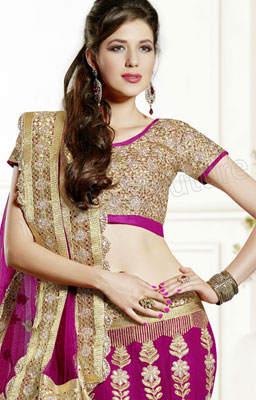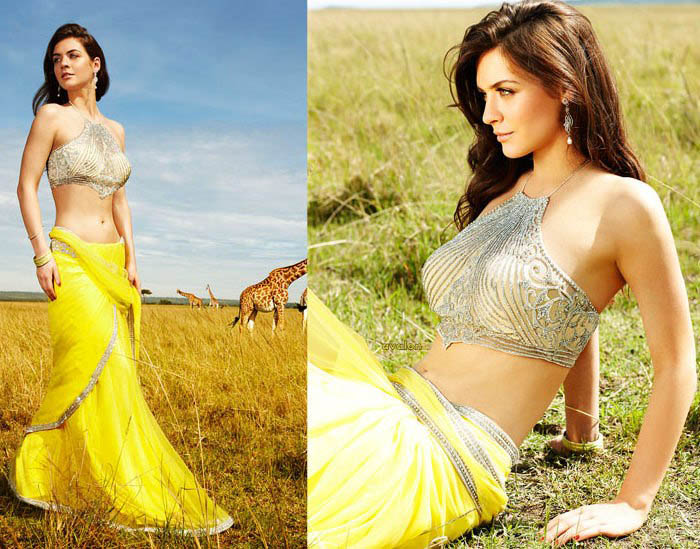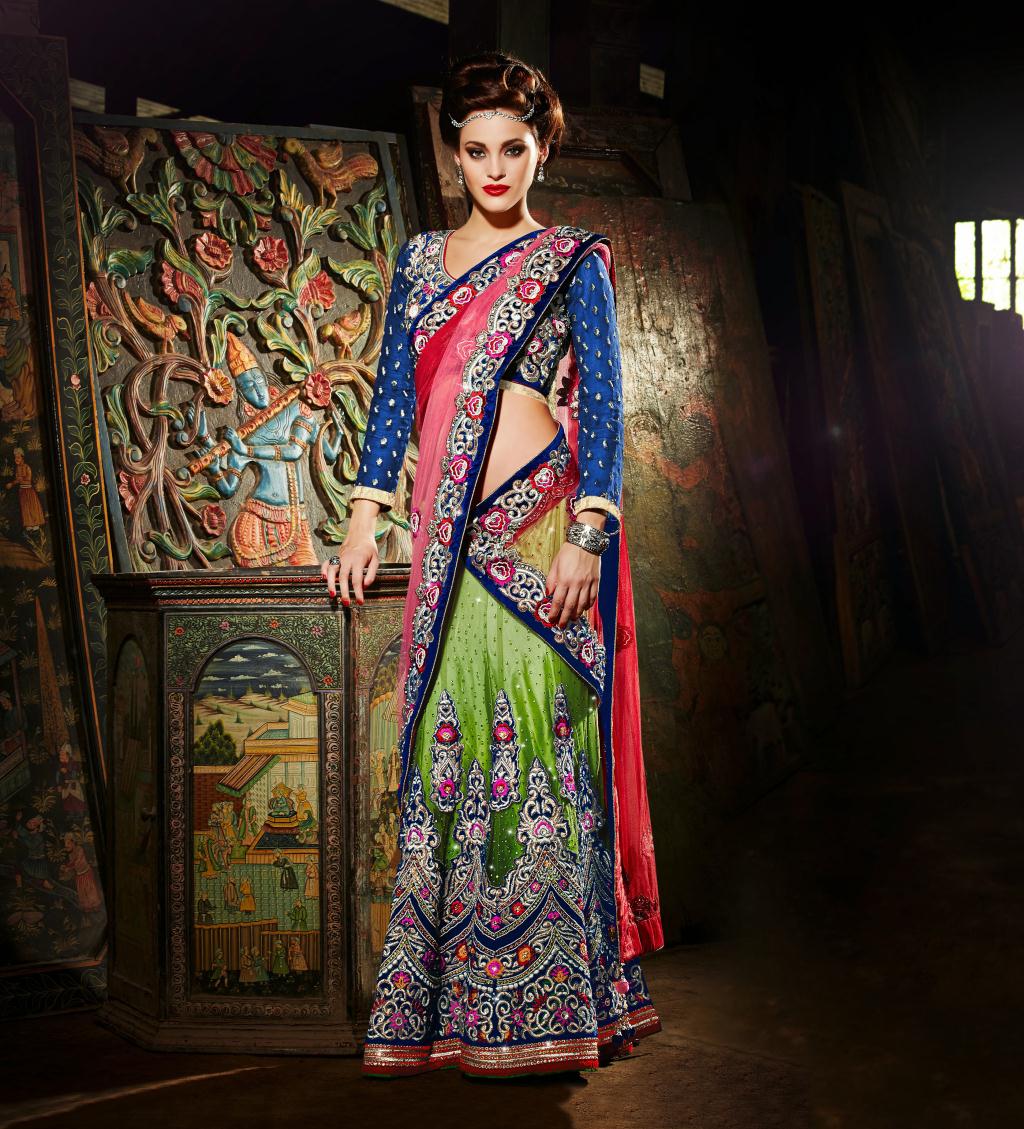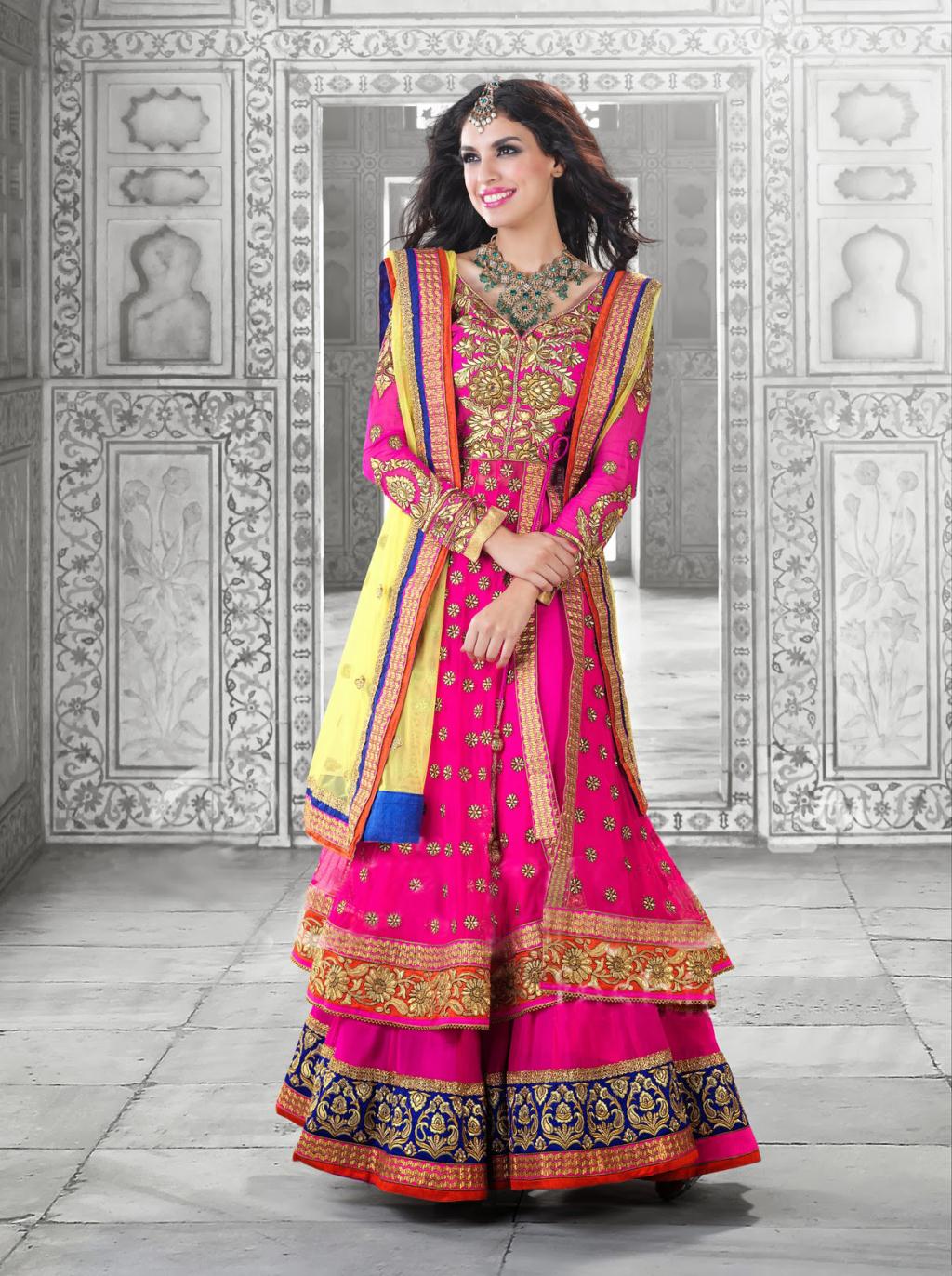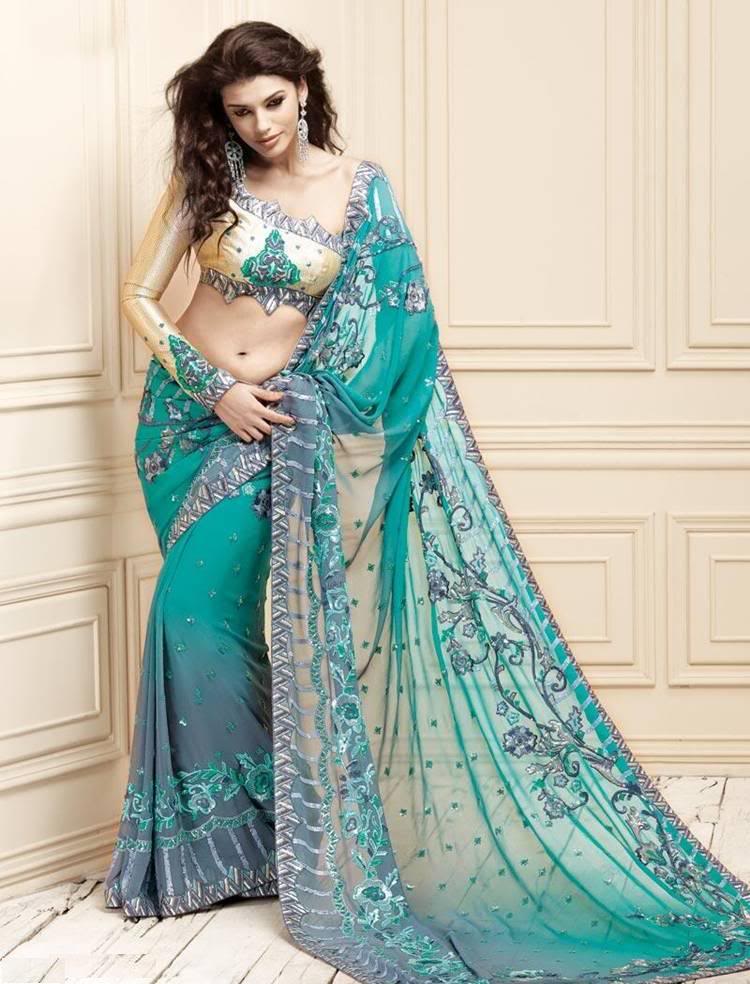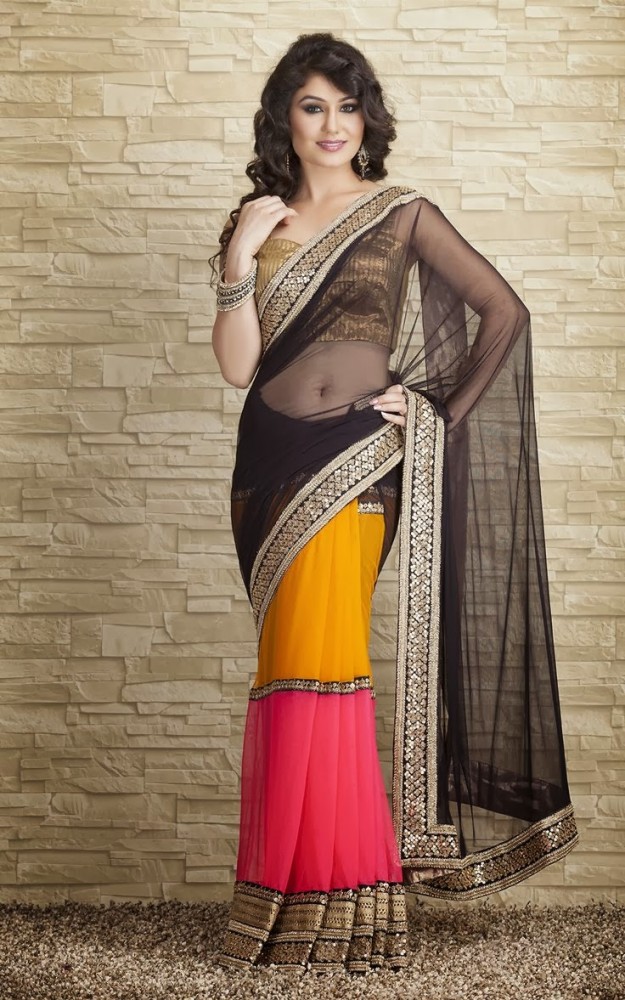Indian Lehenga Online Biography
source(Google.com.pk)Lehenga or lehnga or Ghagra or Pavadai in Tamil or Langa in Telugu and Kannada is a form of skirt which is long, embroidered and pleated. It is worn as the bottom portion of a Gagra choli or Langa Voni. It is secured at the waist and leaves the lower back and midriff bare.In North India a lot of embroidery work is done on a lehenga and is popular during the festivals and weddings.
History
The ancient version of skirt or Ghagri evolved from Bhairnivasani, which in turn evolved from the Antariya when stitched on one side became tabular and was worn gathered together at the waist, and held by a girdle. This was one of the earliest forms of a clumsily stitched skirt. It was worn using drawstring or nada.Variations
The ghagri was a narrow skirt six feet long the same length as original antariya. This style can still be seen worn by Jain nuns in India.In Andhra Pradesh it is called as Langa and part of the dress Langa Voni.
Dupatta
The Dupatta is a shawl or large scarf that is worn together with the lehenga and the choli. Until early 21st century Dupatta was the most decorative part of gagra choli, while rest of the garment was more simplistic, especially the gagra. Dupatta is worn in many regional styles across India. Most common style since early medieval times was to pleate the dupatta on the one end and tucking it into the front of the gagra and wrapping it across the waist and over the shoulder or head, similar to the way sari is worn. While women who worked in the farms tucked both ends of dupatta into their choli.Originally, it was worn as a symbol of modesty. While that symbolism still continues, many today wear it as just a decorative accessory. There is no single way of wearing the dupatta, and as time evolves and fashion modernizes, the style of the dupatta has also evolved.
Fabrics
The lehengas are made of a number of fabrics such as Silk, Cotton, Khadi,Georgette, Crape, Net, Satin, Brocade and Chiffon. Even though designers have successfully used the various kinds of fabrics for making the lehenga, silk is still the most preferred fabric.Decorative stitching
Apart from the fabric, decorative stitching patterns also play a role. Lehengas come with a wide variety of decoration and embroidery work like Gota, Phulkari, Shisha, Chikankari, Zari, Zardozi, Nakshi, Kundan, etc. For festivals like Navratri, the ethnic Shisha embroidery is popular with a bit of patchwork. For formal wear and weddings, the embroidery is heavier in pearls, silk, sequins and zari.Kutch embroidery is an evolving expression of the craft and textile traditions of the Rabaris, a nomadic tribe in Gujarat.Kutch work is unique in the sense that a net is woven on a cloth using thread.The net is then filled in using the same thread by intricate interlocking stitches. The patterns are usually built around geometric shapes.This embroidery follows its own traditional design logic and juxtaposition of colours and motifs. The Rohanas tribals of Kutch specialise in skirt work. The Sodhas use a geometric style for their embroidery. The Garacia Jats are experts in tiny embroidery on the yoke, which intermingles with red, orange, blue and green threads. The Dhanetah Jats love embroidering broad pear-shaped mirrors using orange, black, yellow and red in chain stitch.
Festive attire
The lehenga choli is the favourite female apparel worn during festivals, weddings or special events in India. This is due to traditions as well as of the fact that it is available in a number of fabrics with many different decorative choices. Traditionally the sari and the lehenga choli are the most popular garments for the bride in India. But it is a common bridal attire mostly in North India and is also the traditional wear of Garba festival in Gujarat.
Indian Lehenga Online Indian Lehnga Dress Suites Design 2014 Choli Photos Pics Images Wallpapers
Indian Lehenga Online Indian Lehnga Dress Suites Design 2014 Choli Photos Pics Images Wallpapers
Indian Lehenga Online Indian Lehnga Dress Suites Design 2014 Choli Photos Pics Images Wallpapers
Indian Lehenga Online Indian Lehnga Dress Suites Design 2014 Choli Photos Pics Images Wallpapers
Indian Lehenga Online Indian Lehnga Dress Suites Design 2014 Choli Photos Pics Images Wallpapers
Indian Lehenga Online Indian Lehnga Dress Suites Design 2014 Choli Photos Pics Images Wallpapers
Indian Lehenga Online Indian Lehnga Dress Suites Design 2014 Choli Photos Pics Images Wallpapers
Indian Lehenga Online Indian Lehnga Dress Suites Design 2014 Choli Photos Pics Images Wallpapers
Indian Lehenga Online Indian Lehnga Dress Suites Design 2014 Choli Photos Pics Images Wallpapers
Indian Lehenga Online Indian Lehnga Dress Suites Design 2014 Choli Photos Pics Images Wallpapers
Indian Lehenga Online Indian Lehnga Dress Suites Design 2014 Choli Photos Pics Images Wallpapers
Indian Lehenga Online Indian Lehnga Dress Suites Design 2014 Choli Photos Pics Images Wallpapers
Indian Lehenga Online Indian Lehnga Dress Suites Design 2014 Choli Photos Pics Images Wallpapers
Indian Lehenga Online Indian Lehnga Dress Suites Design 2014 Choli Photos Pics Images Wallpapers
Indian Lehenga Online Indian Lehnga Dress Suites Design 2014 Choli Photos Pics Images Wallpapers
Indian Lehenga Online Indian Lehnga Dress Suites Design 2014 Choli Photos Pics Images Wallpapers
Indian Lehenga Online Indian Lehnga Dress Suites Design 2014 Choli Photos Pics Images Wallpapers






